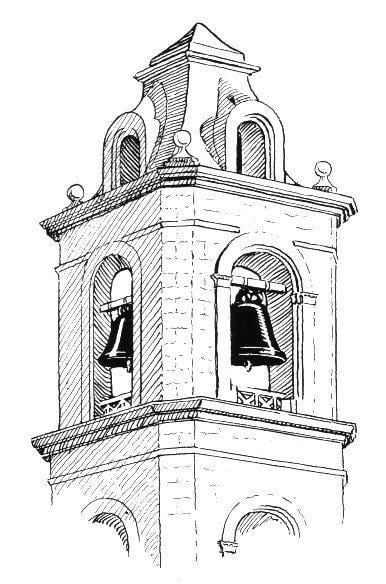 | ||
The belfry is a structure enclosing bells for ringing as part of a building, usually as part of a bell tower or steeple. It can also refer to the entire tower or building, particularly in continental Europe for such a tower attached to a city hall or other civic building.
A belfry encloses the bell chamber, the room in which the bells are housed; its walls are pierced by openings which allow the sound to escape. The openings may be left uncovered but are commonly filled with louvers to prevent rain and snow from entering. There may be a separate room below the bell chamber to house the ringers.
Etymology
The word belfry comes from Old French berfrei which is derived from Germanic *bergan "to protect" and *frithuz "peace"; that is, it was originally a watch tower providing protection against hostile incursions. In larger towns, watchmen in these towers were also on the lookout for fires. Though flags were used by the watchmen for communication, these towers usually contained an alarm bell or bells built into a Bell-Cot, thus Middle English speakers thought berfrei had something to do with bells: they altered it to belfry, an interesting example of the process of folk etymology. Today's Dutch belfort combines the term "bell" with the term "stronghold". It was a watchtower that a city was permitted to build in its defence, while the Dutch term klokkenstoel (bell-chair) refers only to the construction of the hanging system, or the way the bell or bells are installed within the tower.
